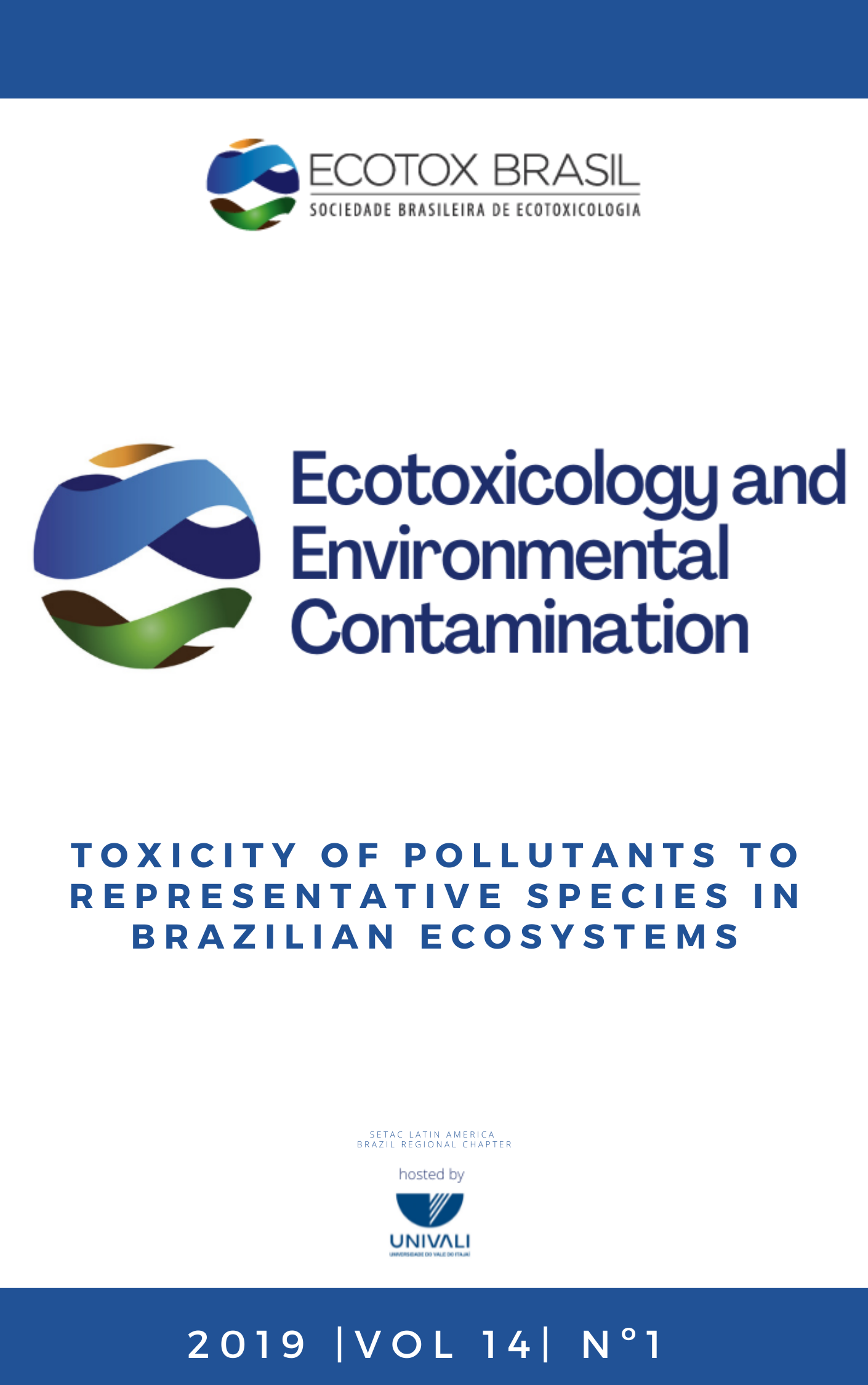Toxicity responses for marine invertebrate species of brazilian occurrence
DOI:
https://doi.org/10.5132/eec.2019.01.02Abstract
To assess the risk of chemical contaminants it is desirable to derive toxicity data from representative species of the ecosystem intended to be protected. However, species of occurrence in Brazil are rarely used in toxicity tests, especially for marine and estuarine environments. To address this need, we evaluated the toxicity of different toxicants such as metals and organic compounds to marine invertebrates of Brazilian occurrence, representative from tropical regions and cultivated in laboratory. We used two epibenthic test species of Brazilian occurrence, Parhyale hawaiensis, a deposit feeding amphipod and Nitocra sp, a harpacticoid copepod. Nitocra sp. was more sensitive than other copepods to zinc, and more sensitive than P. hawaiensis to disperse dyes. Sensitivity species distribution revealed that Nitocra sp. and P. hawaiensis were similarly responsive as other marine species to zinc, and Nitocra sp. was among of the most sensitive species. Moreover, our study highlighted that organic compounds are poorly explored in toxicity evaluation with marine organisms; therefore, more studies need to be carried out to assess the toxicity of different substances using marine and estuarine organisms representative of tropical ecosystems.Downloads
Published
How to Cite
Issue
Section
License
Copyright (c) 2019 Ecotoxicology and Environmental Contamination

This work is licensed under a Creative Commons Attribution 4.0 International License.
Copyright © 2006 ECOTOX-Brasil
Copyright notice: It is a condition for publication that manuscripts submitted to this journal have not yet been published and will not be simultaneously submitted or published elsewhere. By submitting a manuscript, the authors agree that copyright for their article is transferred to the Sociedade Brasileira de Ecotoxicologia (ECOTOX-Brasil) if and when the article is accepted for publication. The copyright covers the exclusive rights to reproduce and distribute articles, including reprints, photographic reproductions or any other reproduction of a similar nature, including translations. No part of this publication may be reproduced, stored in a retrieval system or transmitted in any form or by any means, electronic, mechanical, photocopying, recording or otherwise, without permission of the publisher.
Notice: While every effort is made by the EEC, editors and editorial board to see that no inaccurate or misleading data, opinions or statements appear in this journal, they wish to make it clear that the contents of the articles and advertisements published herein are the sole responsibility of the contributors or advertisers concerned. Accordingly, the EEC, the editorial board and editors and their respective employees, officers and agents accept no responsibility or liability whatsoever for the consequences of any inaccurate or misleading data, opinion or statement.




